Durham Cathedral
Durham Building Photos Thumbnails Buildings Home
|
Durham Cathedral The Cathedral Church of Christ, Blessed Mary the Virgin and St Cuthbert of Durham — known as Durham Cathedral is a church in the city of Durham, the seat of the Anglican Bishop of Durham. The Bishopric dates from 995, with the present cathedral being founded in AD 1093. The cathedral is regarded as one of the finest examples of Norman architecture. The present cathedral replaces the 10th century "White Church" built as part of a monastic foundation to house the shrine of Saint Cuthbert of Lindisfarne. The treasures of Durham Cathedral include relics of St Cuthbert, the head of St Oswald of Northumbria and the remains of the Venerable Bede. Durham Cathedral occupies a strategic position on a promontory high above the River Wear. From 1080 until the 19th century the bishopric enjoyed the powers of a Bishop Palatine, having military as well as religious leadership and power. Durham Castle was built as the residence for the Bishop of Durham. The seat of the Bishop of Durham is the fourth most significant in the Church of England hierarchy, and he stands at the right hand of the monarch at coronations. Signposts for the modern day County Durham are subtitled "Land of the Prince Bishops." There are daily Church of England services at the Cathedral, with the Durham Cathedral Choir singing daily except Mondays and when the choir is on holiday. The cathedral is a major tourist attraction within the region, the central tower of 217 feet giving views of Durham and the surrounding area. Photo 422, May 2011 |

|
|
Durham Cathedral with crane in front Photo 480, May 2011 |
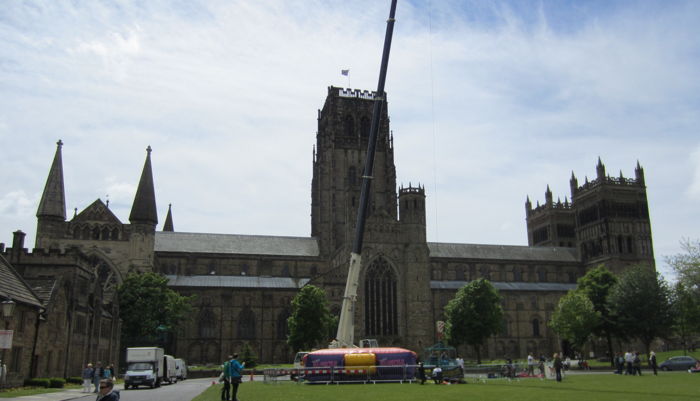
|
|
Durham Cathedral Photo 448, May 2011 |
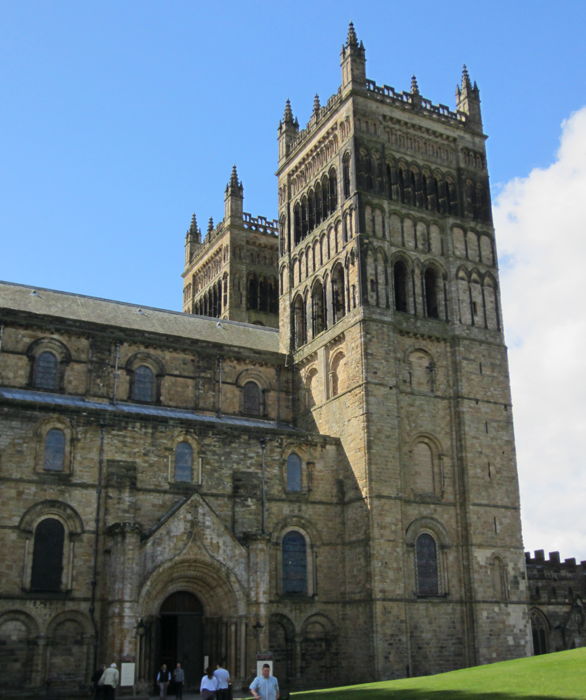
|
|
Durham Cathedral Photo 474, May 2011 |

|
|
Durham Cathedral Photo 455, May 2011 |
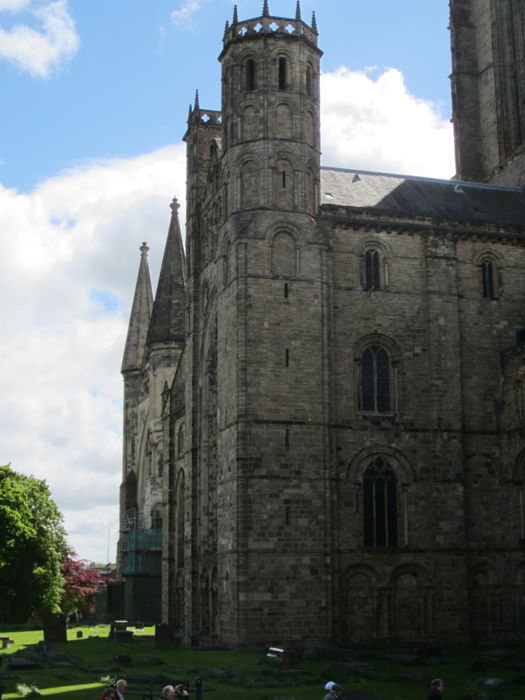
|
|
Durham Cathedral courtyard Photo 458, May 2011 |
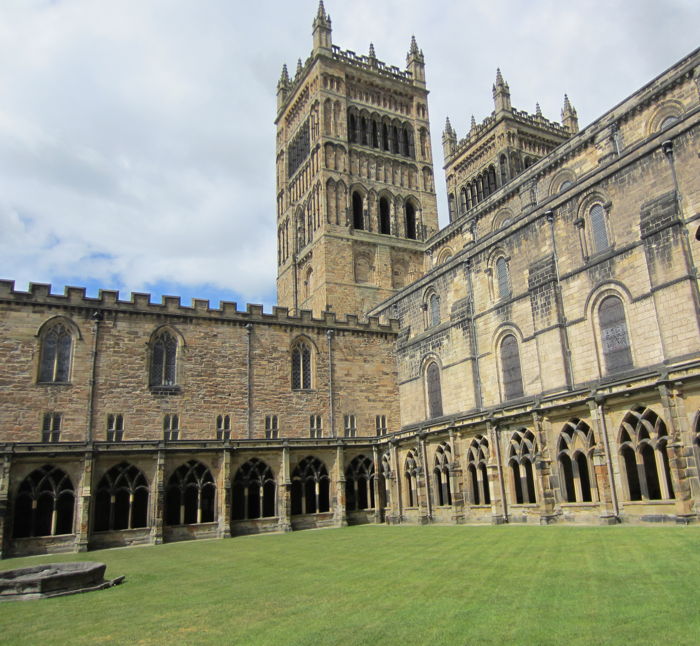
|
|
Side of Cathedral Photo 464, May 2011 |

|
|
Side wall of Cathedral Photo 466, May 2011 |
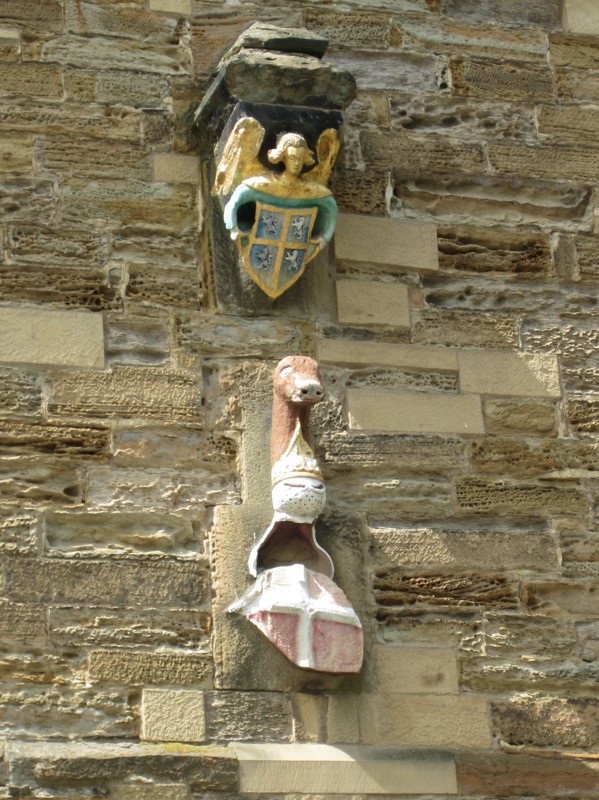
|
|
Durham Cathedral Photo 670, May 2011 |
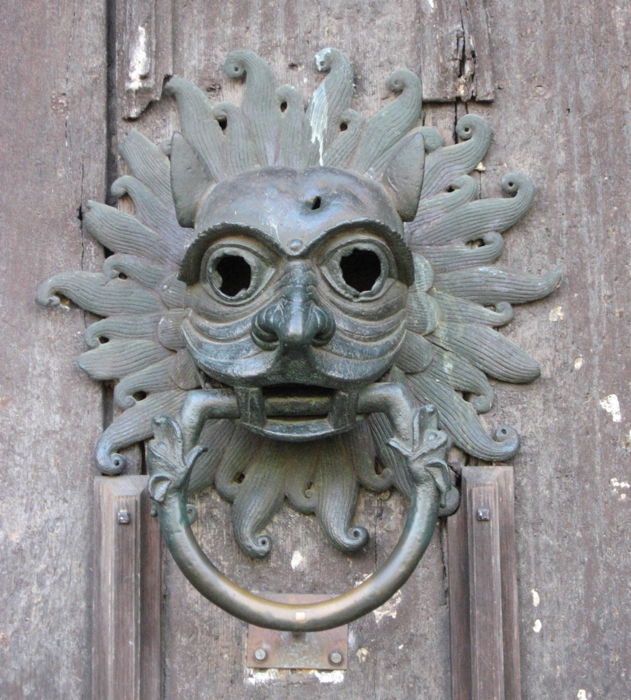
|
|
Durham Cathedral, covered walkway in cortyard Photo 671, May 2011 |
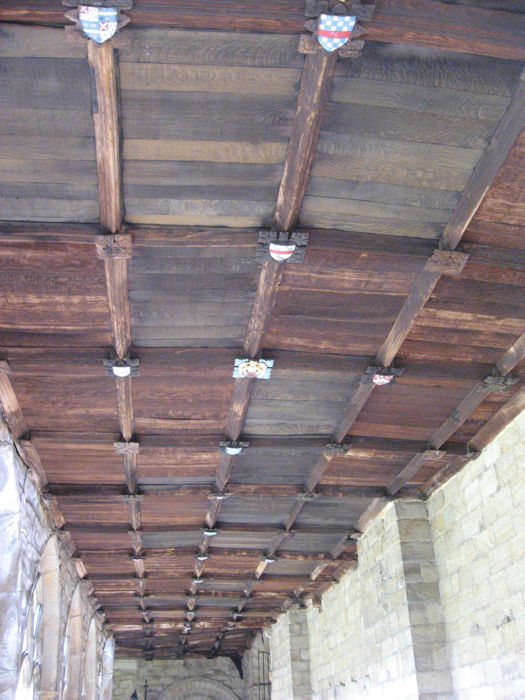
|
|
Durham Cathedral Photo 673, May 2011 |
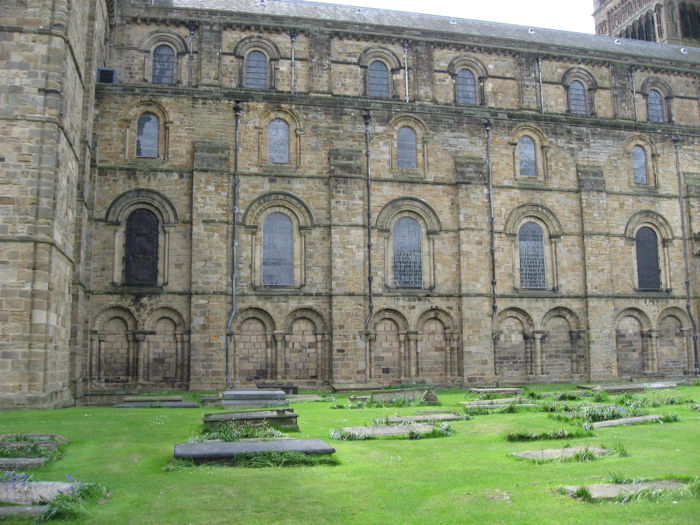
|
|
Durham Cathedral Photo 451, May 2011 |

|